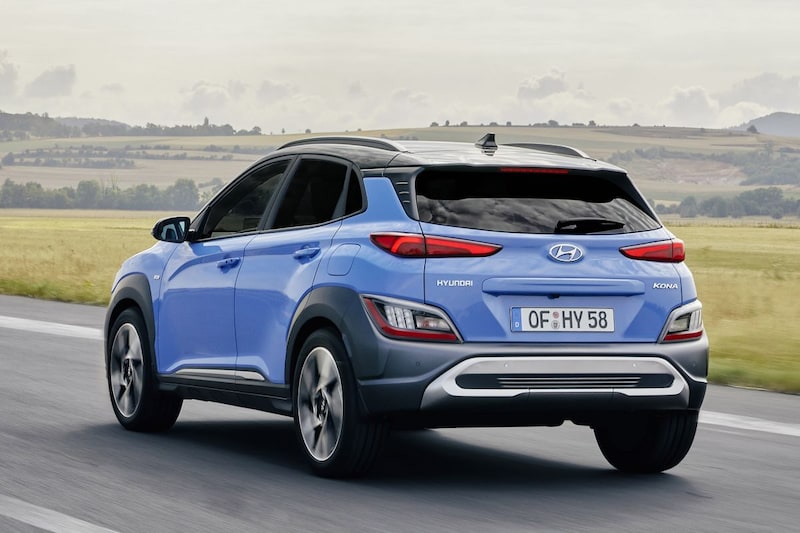
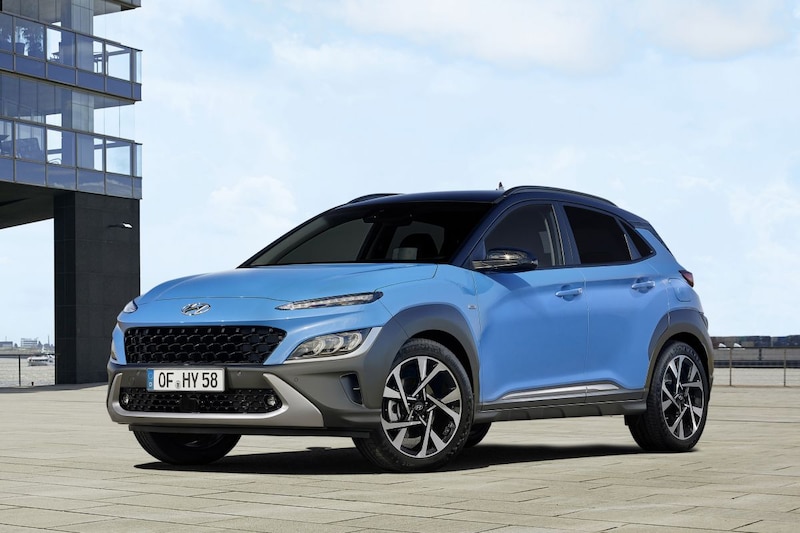
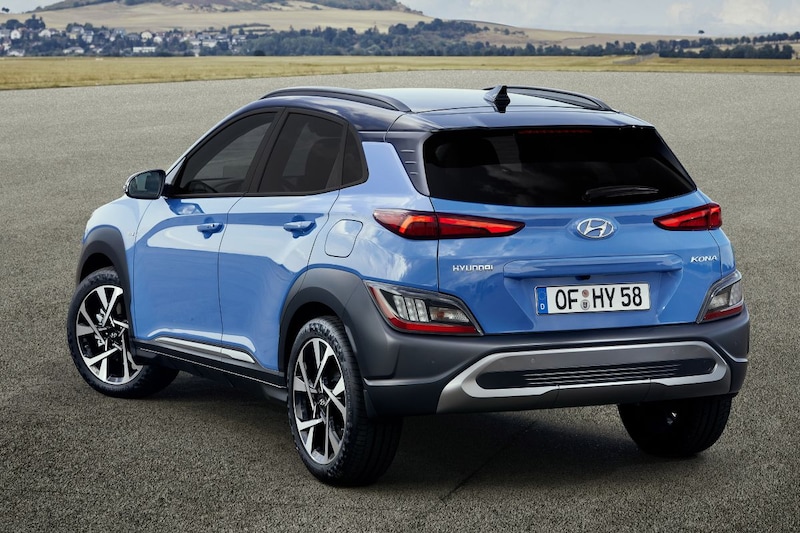
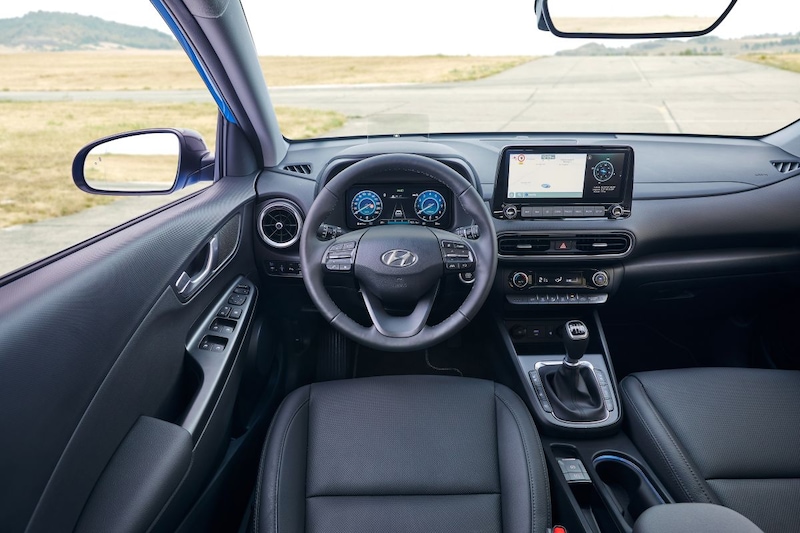
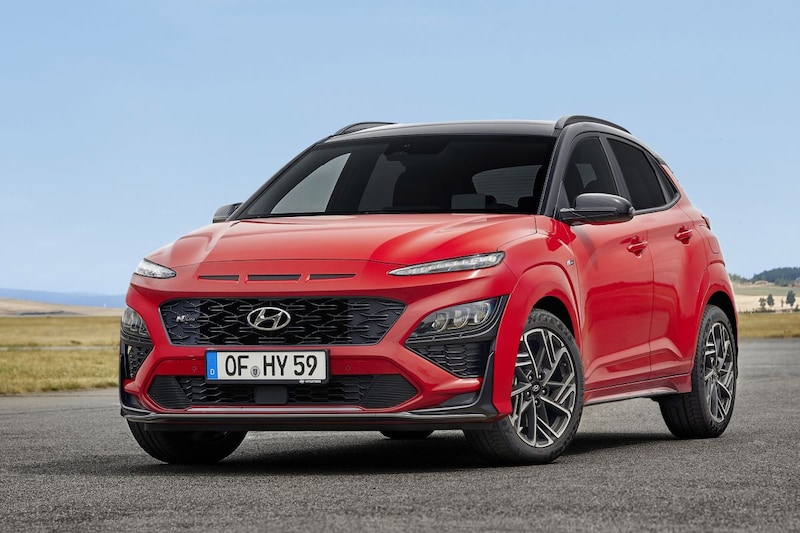
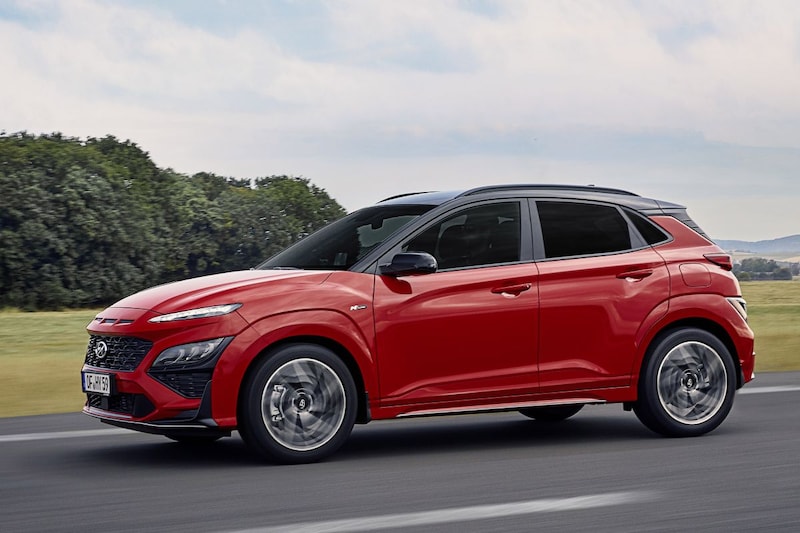


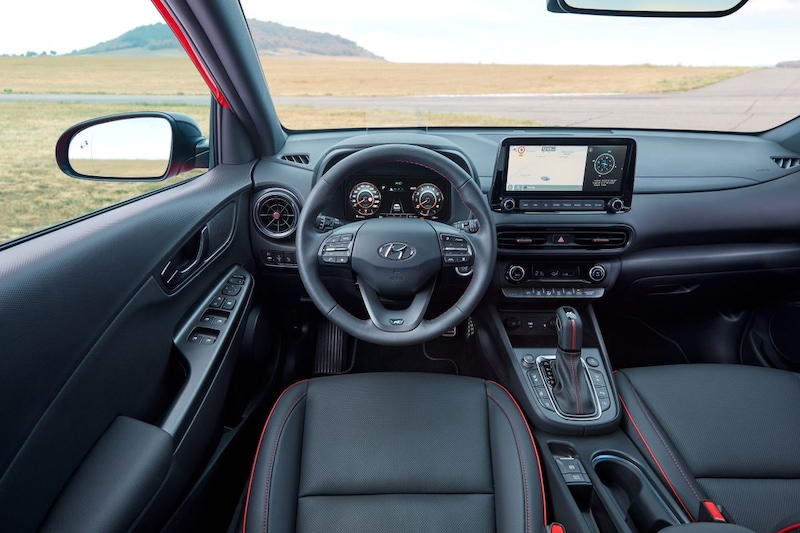

Hyundai is carrying out a relatively radical facelift on the Kona. The naturally eccentric crossover becomes even more extravagant if possible. Incidentally, it does not stop with external adjustments, the crossover also benefits from novelties on the motor level.
Introduced to the world in 2017, Kona goes under the knife three years after its introduction. While modernizing the compact crossover, a competitor to cars like the Renault Captur and Kia Stonic, Hyundai has not held back.
Appearance
The renewed Kona can be recognized from the outside by its completely new front. The ‘layered’ concept will be retained, although the design will be overhauled. For example, with the regular versions, the slot between the bonnet and the grille is done and the grille itself has also been renewed. Not only is its shape different, the air grille will not even be split into two parts from now on. Hyundai installs new LED daytime running lights and the actual headlights placed one floor lower are also completely different in shape. Hyundai also gives the Kona a new bumper, in which it fits much smaller fog lights. Things are also being tackled at the back, although the adjustments here are less drastic. The Hyundai Kona gets rear lights with a new layout, a new bumper and here also a modified ‘second set’ lighting just above the bumper. The new bumpers make the Kona a total of 4 centimeters longer than the current one. Hyundai also introduces new alloy wheels and five new paint colors.
The workplace is also being modernized, although here too the differences with the current Kona are not very great. Hyundai says, among other things, that it has improved the use of materials. The center tunnel, among other things, has a different design, an element where Hyundai has now placed a button for the new electric handbrake. Hyundai introduces new mood lighting and adds, among other things, new aluminum finish around things like the speakers and the ventilation grilles. In addition, the speech recognition is expanded, from now on you can chat to the Kona to activate things like the steering wheel heating. More interesting is the new, larger infotainment screen with a diameter of 10.25 inches. The physical buttons to navigate the system remain, but move from the sides of the screen to the bottom of it. The screen is not standard, those who do not pay extra will receive a DAB radio with an 8-inch display, a screen that is one inch larger than that of the previous basic radio.
N-Line
The Kona was already available in numerous versions and a new sporty-looking version is added to the range: the N-Line. This optically dressed version is characterized, among other things, by its bumpers equipped with larger cooling openings – complete with rear diffuser – and stands on two-tone 18-inch light metal. In contrast to the regular versions, the plastic around the wheel arch edges is in body color and there is a groove between the hood and grille. In addition, the Kona N-Line has two tailpipes at the rear. Inside, the N-Line is embellished with things like leather or suede upholstery, red stitching, aluminum pedals and various N-logos. The N-Line already shows to a certain extent what you can expect from the real Kona N that is in the pipeline. That superlative of the Kona family will be a full-fledged sportsman, although it is not yet entirely certain what will drive that powerhouse.
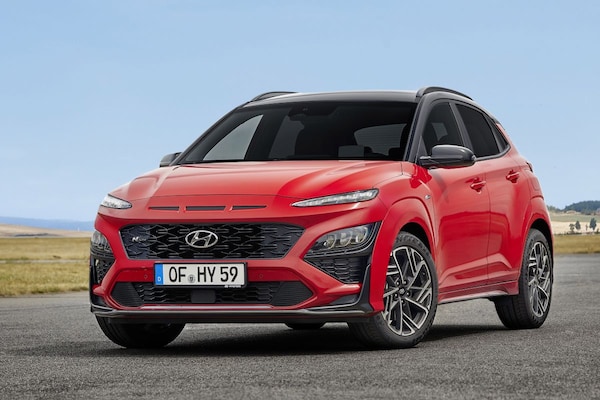
Mild-Hybrid
On the motor level, the Kona, like most of its recently renewed siblings, will have mild hybrid technology. The crossover therefore gets a new 1.0 petrol engine, of which the 120 hp version is equipped with a 48 volt system. This 1.0 is also available with Hyundai and Kia’s new iMT transmission, a six-speed manual gearbox that disconnects the engine from the box as soon as the accelerator is released. The Kona Hybrid, with a naturally aspirated 1.6 and a 44 hp electric motor that draws electrical energy from a 1.56 kWh battery pack, is retained. The electric Kona’s Electric are also returning. Other technical adjustments include the chassis. For example, the Kona should now have a slightly more comfortable suspension and the steering has also been adjusted.
Security systems
No facelift without the introduction of new safety systems and so the Kona comes after its update on Leading Vehicle Departure Alert (LVDA). This system provides a warning if the driver does not react appropriately when the vehicle in front starts moving. Also new is Lane Following Assist (LFA) that keeps the Kona neatly centered in the lane. The existing safety systems have been tightened up, according to the Koreans. Forward Collision-Avoidance Assist (FCA), for example, also optionally sees cyclists and the Kona with automatic transmission is now available with Rear Cross Traffic Collision-Avoidance Assist (RCCA). The Kona also features Rear Seat Alert (RSA), a system that warns if something or someone is still sitting in the back seat when the driver leaves the car. Safe Exit Warning (SEW) is to prevent passengers from getting out when, for example, a car is approaching.
Introduction
The Kona has done Hyundai no harm. More than 228,000 units have been sold since the model’s launch in 2017. In Europe it is one of Hyundai’s most popular models and last year the car was the best-selling model of the brand in the Netherlands.
Prices of the renewed Kona are not yet available. The Dutch importer does report that the facelifted Kona N-Line will go on sale in the Netherlands at the end of 2020. Mind you, these are the petrol versions. The updated Kona Hybrid and Kona Electric will follow in 2021.